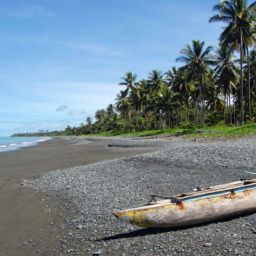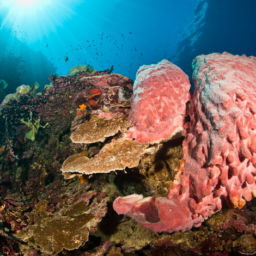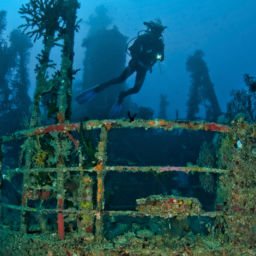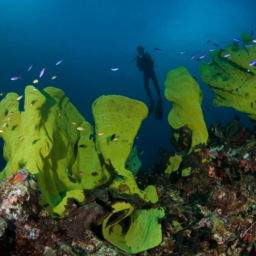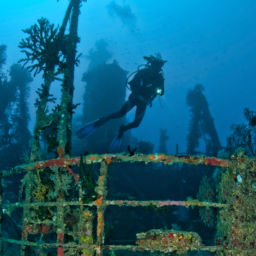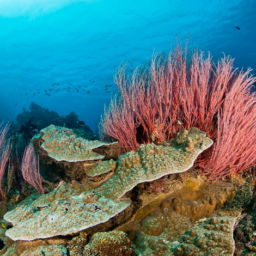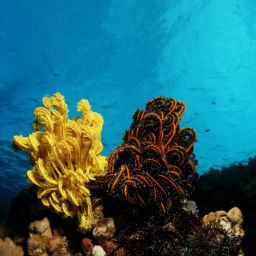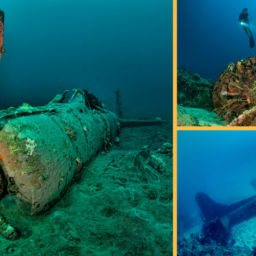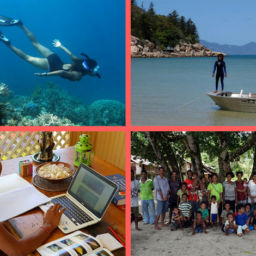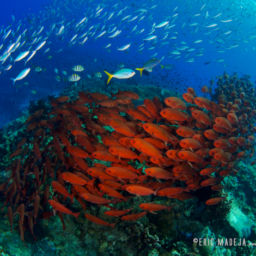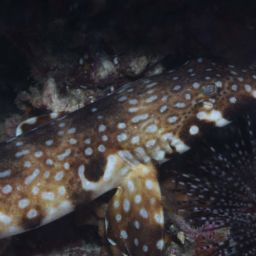Turtle numbers are declining in Papua New Guinea, under threat from people who eat turtle eggs, over-fishing and pollution. Saving the turtles of Papua New Guinea is essential, and thus the owners of Lissenung Dive Resort, Dietmar and Ange Amon, have stepped in to help protect with a privately funded turtle conservation project.
Located in the New Ireland province and a 30-minute boat ride from the province’s capital of Kavieng, Lissenung is a small tropical paradise surrounded by pristine reefs and abundant marine life. Dietmar and Ange have been managing this boutique dive resort since 1996.
Protecting the turtles of Papua New Guinea
“In 2013, we started to visit a couple of nearby islands to protect turtle eggs,” says Ange. “During a visit to one of the islands, we stumbled across locals who were poaching the eggs, something we hadn’t realized was such a big problem here. Sure, we had seen the occasional turtle sold at the market, but we weren’t aware that the eggs were also a food source. A bit naive, probably, not to realize that locals would eat turtle eggs just like we eat chicken eggs.
“Ever since then, from mid-September till the end of March, we travel to these two islands daily to beat the locals to the nests and protect the eggs. We check for new turtle tracks that weren’t there the day before, follow them to locate the nest, then dig up the eggs carefully. They are placed into chicken egg cartons and transported to Lissenung.”
After arriving safely back at the resort, individual eggs are measured and weighed. And then comes the tricky and time-consuming part. The new nest must be an exact replica of the original, a process which requires precision and care. Each egg — with each nest containing between 50-200 eggs — must be meticulously re-positioned in the same orientation and order in which they were found. Doing so ensures the incubation conditions are as close as nature intended while the secure new location ensures protection against predators and poachers. The incubation period normally lasts around 60 days, so staff labels nests with dates to estimate roughly when each will hatch.
Results of the work
Lissenung staff has recorded over 10,000 eggs in the six years they have been managing the sanctuary, and with a 90 percent hatch rate, their efforts are making a difference. This is especially important as most of the eggs at Lissenung belong to the critically endangered hawksbill turtle.
Once a nest hatches, the babies are released onto the beach as quickly as possible — usually in the evening when baby turtle instincts kick in. They are drawn towards the ocean and innately propelled to swim out into the open sea. Here they will use sargassum floats — a type of seaweed that floats in large island-like masses — as a haven to grow, feed and hopefully survive into adulthood. It is estimated only about 1 in 1000 sea turtles survive to adulthood so the efforts Lissenung staff are making help give the local hawksbills a fighting chance.
Finally, not only are Ange and Dietmar recording and sharing valuable data about the local turtle populations with various scientific research institutions in Australia, they are actively involving local communities and educating them about turtle conservation.









